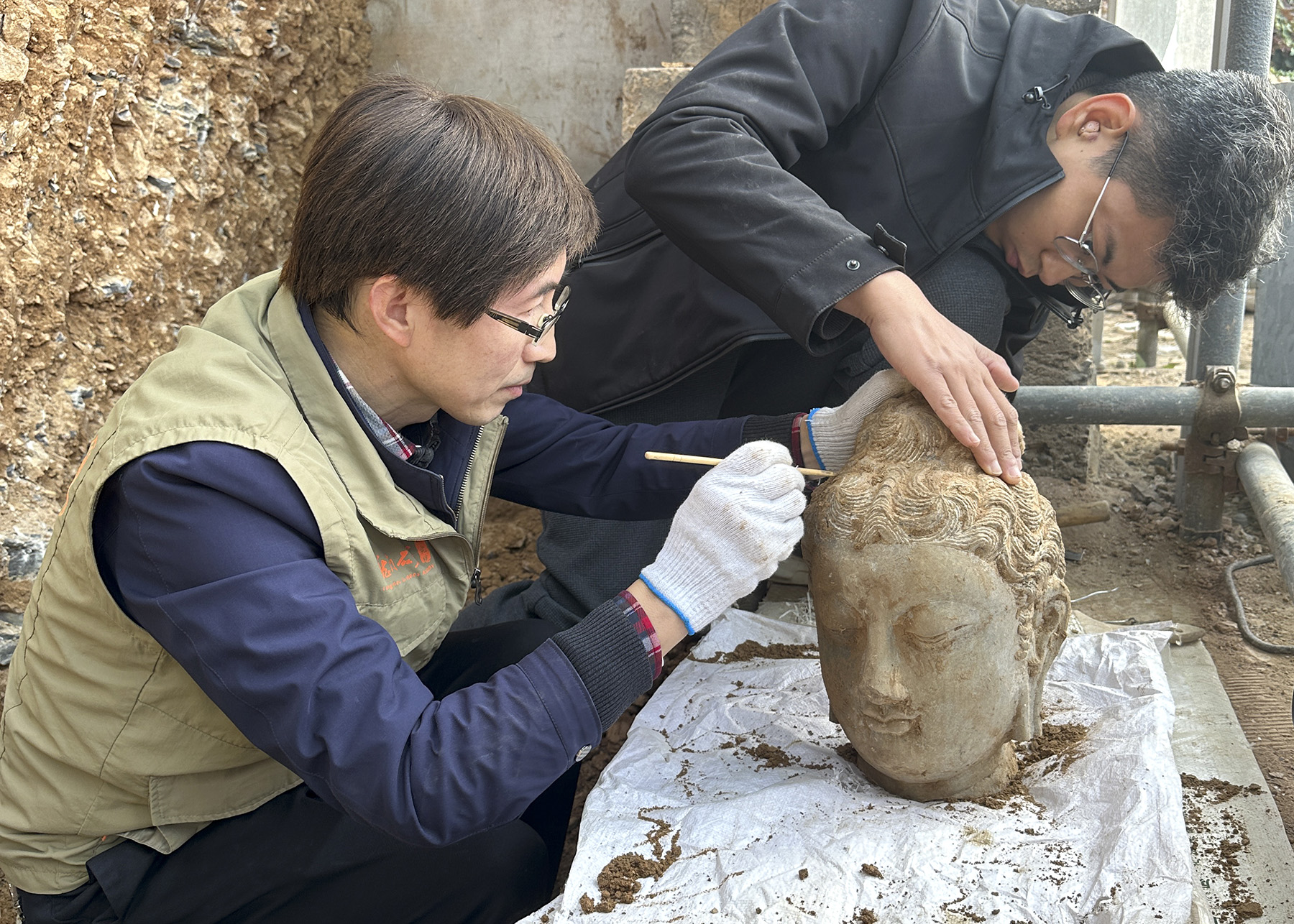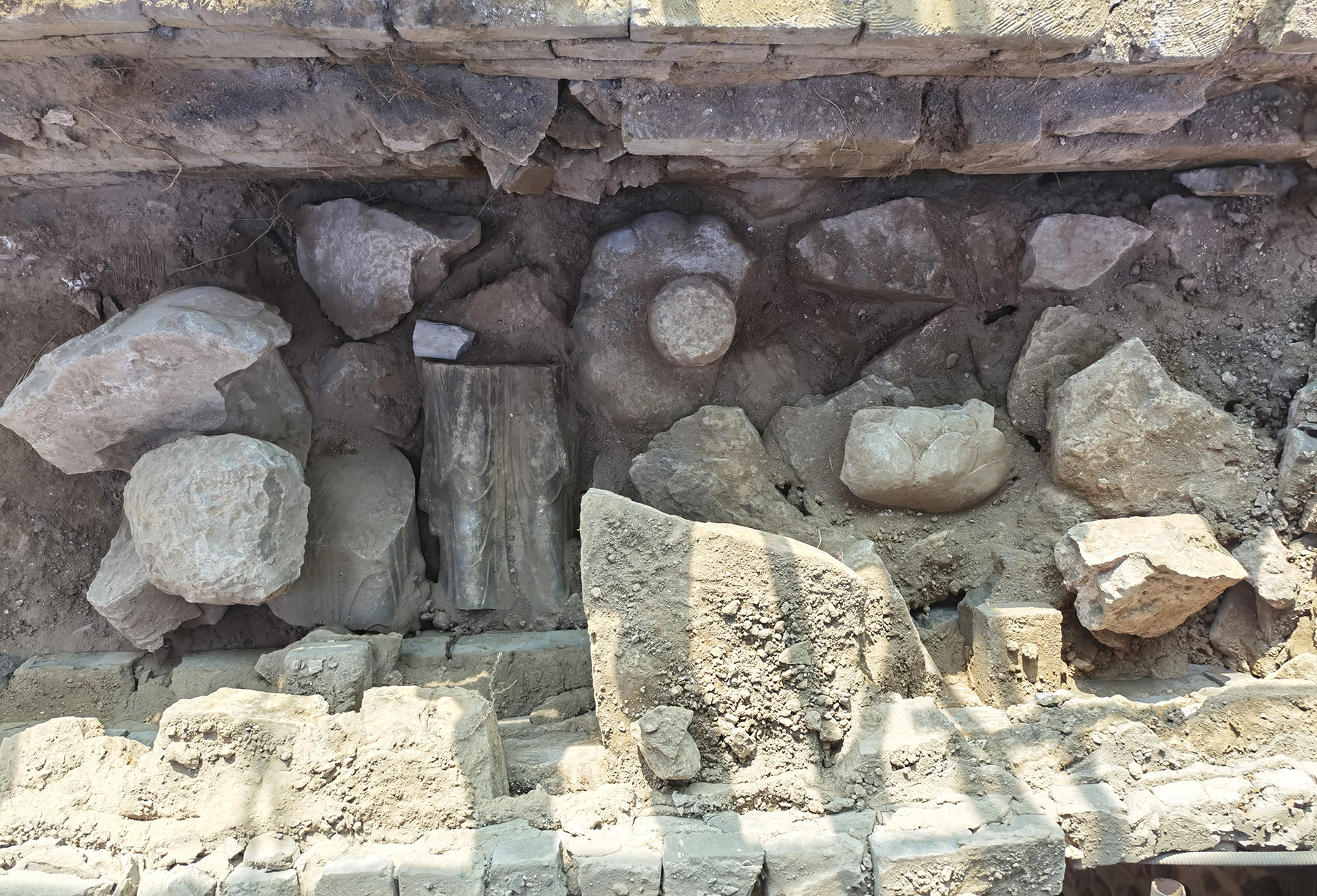
Archaeologists have made a stunning discovery of more than 80 stone carvings and building units, dating back about 1,300 years, at the Leigutai caves of the Longmen Grottoes in Luoyang, Henan province.
The Longmen Grottoes Research Institute, which oversees the UNESCO World Heritage Site, made the announcement as the Leigutai caves reopened to the public on Wednesday after renovation.
The relics, found during renovation inside the west wall of the south cave of Leigutai, which sits on the east hill of the grottoes, are believed to have been used as materials to strengthen the wall during restoration work after an earthquake struck the area in the 16th century.
"This is the first time archaeologists have found statues inside a wall at the Longmen Grottoes," Lu Wei, director of the history and humanities research center of the institute, told China Daily.
The grottoes were first built in AD 493. In the 14 centuries that followed, rulers of different dynasties and numerous pilgrims kept expanding their scale. There are currently more than 2,300 caves and niches on the steep cliffs of two hills flanking the Yihe River.
The Leigutai site, boasting three major parallel caves and dozens of smaller caves and niches, was built on the east hill during the reign of Empress Wu Zetian (690-705) of the Tang Dynasty (618-907).
In recent years, cracks surfaced on the walls and roof of the Leigutai south cave and falling bricks posed serious risk for visitors.
Ma Chaolong, director of the protection center at the institute, told Henan Daily in an interview that the situation worsened after heavy rains in Henan in 2021 led to water leakage. The renovation work was completed last week.
Lu, the history and humanities research center director, said that workers engaged in the project noticed a bulge on the west wall of the south cave.
When they pulled down the wall, they found an array of exquisite stone statues, pottery statuettes used for decorating rooftops and bearing stones used to support doors, he said.

Some of the relics are large in size and feature exquisite carvings, while several of them show traces of colorful paint, Lu said.
A well-preserved stone Buddha head, 38 centimeters in height and 22 centimeters in width, is among the stunning finds.
"The face is round, plump and has a particularly serene expression. The hair is like tidal waves. The head sculpture is exquisitely carved," Lu said.
"Judging from the overall appearance, it has a distinctive artistic style associated with the zenith of the Tang Dynasty, which indicates that it belongs to a period between the late 7th century and the early 8th century," he said.
The relics were stacked up and embedded in the wall, which is not originally from the Tang Dynasty. Judging from its appearance and use of materials, the wall was built much later during renovation work, Lu said, adding that the bricks used to build the wall were from the Ming Dynasty (1368-1644).
Combining historical records about a powerful earthquake in Henan during the reign of Emperor Jiajing (1522-1566) of the Ming Dynasty, the epicenter of which was not far from Luoyang, archaeologists preliminarily infer the wall was rebuilt after the temblor.
Lu said the relics found inside the wall were probably part of cave debris after the quake. When masons rebuilt the wall, they used these as infill for better foundational strength, and also to save some bricks.
The discovery has shed light on Buddhist statue art during the Tang Dynasty, the development of the Leigutai area, ancient socioeconomic development and religious practices, he said.
Luoyang was the national capital during Empress Wu's reign. Many members of the royal family and aristocracy built caves, which they believed would bring them good fortune, gradually forming the large-scale Longmen Grottoes.
During the Northern Song period (960-1127), Emperor Zhenzong (968-1022) paid a visit to the grottoes and ordered a major renovation at the site, repairing more than 15,000 statues.
"We haven't found records about major renovation of the grottoes in Ming Dynasty documentation, but the large number of Ming bricks used there indicates that those people did have a role to play in the renovation," Lu said.
The grottoes regained popularity under the Qing Dynasty (1644-1911) after a visit made by Emperor Qianlong (1711-99), he added.
In November 2000, the Longmen Grottoes were included on the UNESCO World Heritage list, the first such honor for an archaeological site in Henan. They form the 25th world cultural heritage site in China.


